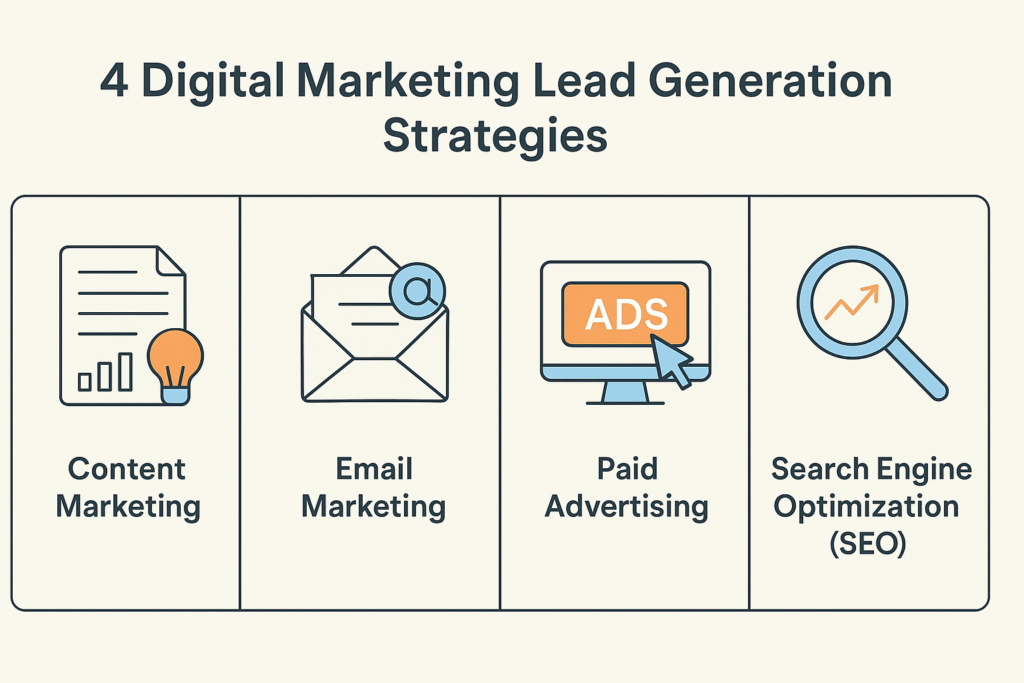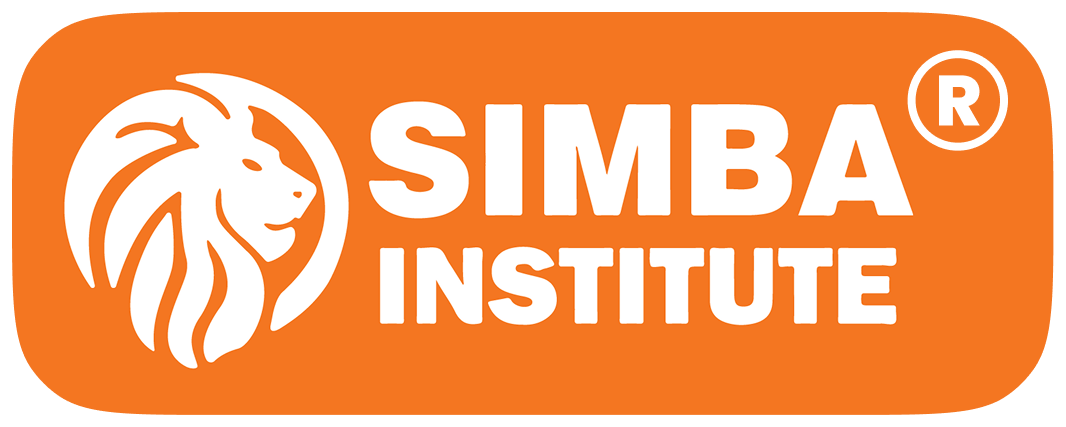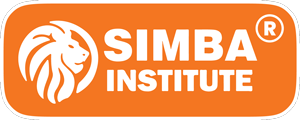Search
People also search for:
4 Digital Marketing Lead Generation Strategies
4 Digital Marketing Lead Generation Strategies
- Home
- 4 Digital Marketing Lead Generation Strategies
4 Digital Marketing Lead Generation Strategies
In our digital-first era, quality lead generation is critical to driving business. Without a continuous flow of prospective customers, even the most superior products or services might never achieve their maximum potential. That’s where digital marketing enters the scene—a collection of strong tools and strategies that assist you in attracting, engaging, and converting online prospects.
Following are four effective digital marketing lead generation strategies that can boost your sales pipeline and fuel long-term growth.

1. Content Marketing: Entice With Value
Content marketing is one of the most consistent methods of creating leads naturally. Through producing valuable and pertinent content that answers the pain points or interests of your target market, you can attract individuals to your brand organically.
Types of content that drive leads:
SEO-optimized keyword-rich blog posts
Ebooks, guides, and whitepapers behind a sign-up
Educational videos or webinars
Case studies and success stories
Why it works:
When people do a search and discover your content useful, they are more likely to have confidence in your brand and give their contact details in return for more detailed information.
Tip: Utilize lead magnets—free content provided for an email address exchange—to grab leads effectively.
2. Email Marketing: Nurture and Convert
Email marketing is one of the highest ROI digital marketing channels. It enables you to nurture leads with personalized and targeted email campaigns, moving them down the funnel.
Critical strategies:
Create segmented email lists (based on behavior, interests, or demographics)
Deliver value with every email—whether education, offers, or updates
Utilize clear CTAs (calls-to-action) to encourage conversions
Why it works:
With email, you’re communicating directly with individuals who have already expressed interest in your brand. This one-on-one touch raises the odds of engagement and conversion.
Pro tip: Utilize automation tools such as Mailchimp or HubSpot to send emails based on user behavior (e.g., reminders for abandoned carts or follow-ups after downloads).
3. Paid Advertising: Accelerate Your Reach
While organic efforts are important, paid advertising speeds up lead generation by placing your offer in front of a highly targeted audience.
Popular platforms:
Google Ads (Search and Display)
Facebook and Instagram Ads
LinkedIn Ads (best for B2B)
YouTube Ads
Why it works:
Paid ads enable exact targeting based on demographics, interests, location, and even behavior. You can also A/B test various ad creatives and landing pages to maximize performance.
Pro tip: Always drive ad traffic to a dedicated landing page optimized for conversion—not your homepage.
4. Search Engine Optimization (SEO): Generate Long-Term Organic Leads
SEO is the science of refining your website and content to rank well on search engines such as Google. Done effectively, it can become a source of good quality leads.
Key SEO areas:
Keyword research and on-page optimization
Technical SEO (site speed, mobile-friendliness, etc.)
Backlink building
Content creation that resolves users’ search intent
Why it works:
Organic search results are trusted more than ads. First-page ranking for keyword-relevant terms generates ongoing traffic—and leads—without recurring ad budget.
Tip: Go after long-tail keywords for more targeted, higher-converting traffic, particularly in niche markets.
Final Thoughts
Lead generation is not product pushing—it’s value creation, trust building, and relationship nurturing. A solid digital marketing strategy blends both organic and paid approaches to reach, attract, and convert leads efficiently.
In summary, the four lead generation strategies discussed in this blog are:
Content Marketing – Develop valuable content to attract and engage.
Email Marketing – Nurture leads with personalized communication.
Paid Advertising – Achieve instant visibility and targeted traffic.
SEO – Create a long-term source of organic leads.
By following these strategies, you’ll be well on your way to creating a lead generation engine that powers your business growth.
Would you like this blog formatted for a website or published on a particular platform like LinkedIn or Medium?


